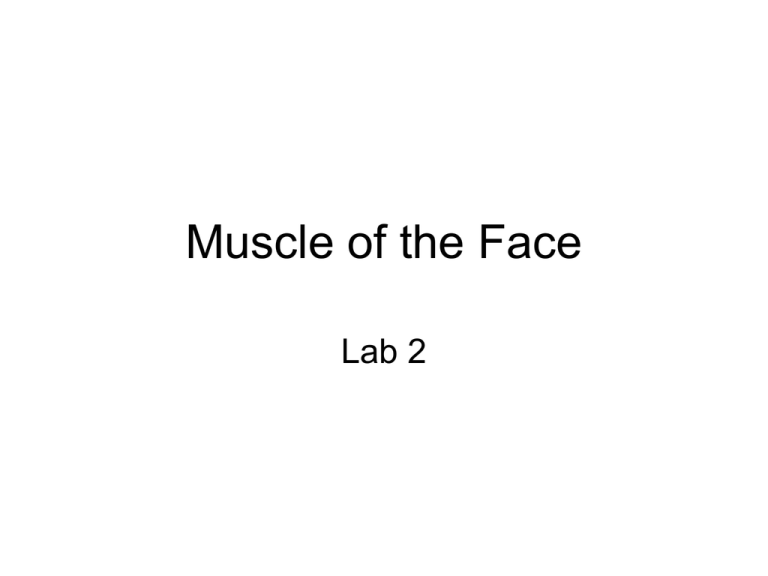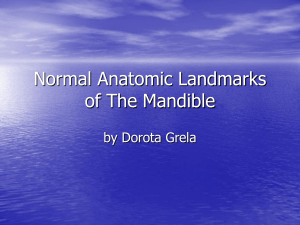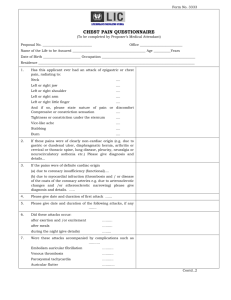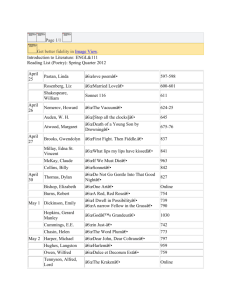Muscle of the Face Lab 2
advertisement

Muscle of the Face Lab 2 The superficial muscles move skin and ears, eyelids, nose, and lips to produce facial expression. 1- The platysma m 2- orbicularis oculi m 3- A levator nasolabialis m. 4- orbicularis oris m. 5- rostral , lateral , and caudal auricular muscles. 1- The platysma m. (1) runs from the neck to the commissure of the lips. It retracts the lips to expose teeth; 2- Superficial muscles that move the ear may be grouped into rostral (2), lateral (3), and caudal auricular muscles. 3-An orbicularis oculi m. (4) closes the palpebral fissure. 4- A levator nasolabialis m. (5) retracts the nose and upper lip. 5- An orbicularis oris m. is situated within the lips (6). Superficial muscles move the ear. Identify rostral auricular mm. (1) which attach to a scutiform cartilage (2) plate in addition to attaching to the auricular cartilage (3) which forms the pinna (auricle) of the ear. 6- The buccinator m. (2) is located within the wall of the cheek. Attaches to the alveolar margin of the mandible ands maxilla. function: to return food from the vestibule to occlusal surface of teeth. Muscle of Mastication • 1- Masseter muscle – Arise from the zygomatic arch and insert in masseteric fossa • 2- Temporalis muscle – Arise from temporal fossa and insert on the coronoid process of mandible. • 3- Digastricus – Arise from paracondylar process of the occipital bone and insert in the body of mandible. • 4- Medial and lateral pterygoid muscle: – Arise from Pterygopalatine fossa and insert on the medial surface and caudal margin of the ramus mandible and angular process In preparaion for a deep dissection, isolate the zygomatic arch (1) by incisions to separate it from the temporal m. (2) and the masseter m. (3). Also identify the digastricus m. (4), auricular cartilage (5), and the mandibular (6) and monostomatic sublingual (7) salivary glands. Notice the fourth upper premolar and first lower molar teeth (asterisks). The zygomatic arch has been removed and the masseter m. (1) has been reflected. Notice the ramus of the mandible (2) and the temporomandibular joint (3). Also find the temporal m. (4) and the digastricus m. (5).



